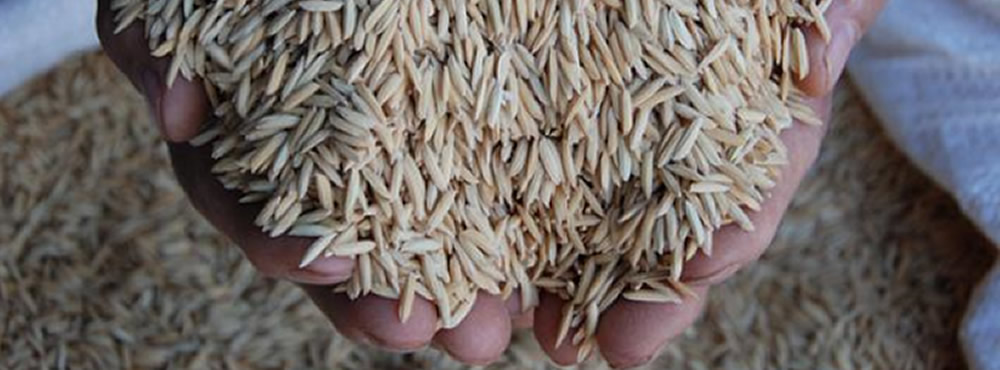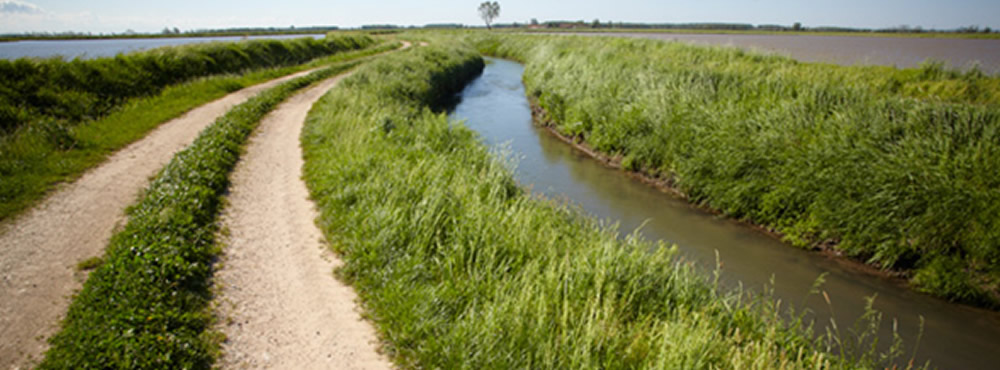
Picture: Embrapa
By utilizing central pivot irrigation, instead of flood-irrigation for rice production, the new rice crop rotation system with corn and wheat may improve product quality and maintain crop yield, while making it even more lucrative with the other crops.
Low Carbon Brazil’s team talked to Mr Marco Foschini, Vice-President of Area Europa and Board member of the Italian Chamber of Commerce of Florianópolis, and with Mr Juan Jorge, General Manager at GND Brazil, to know more about this technique, and their objectives and expectations around this project.
1. Has Area Europa provided many consultancy services to low carbon projects in other markets, as you have done in Brazil?
Marco Foschini: Area Europa is involved with many projects, not only in Europe, as the company’s name might suggest, but in other countries as well, and especially in Brazil.
In addition to being VP of Area Europa, I am also a Managing Board member of the Italian Chamber of Commerce of Florianópolis, and this function has enabled me to establish relations with Brazilian companies. In addition to that, we are holding good negotiations in Porto Alegre, particularly with SDECT (Economic Development, Science and Technology Secretary, Mrs Suzana Kakuta). A specific precision agriculture project has already been implemented in Rio Grande do Sul, together with company PGD Engenharia and engineer José C. Gross, to promote sustainable rice production.
2. In relation to the project selected by Low Carbon Brazil, in which countries the rotation technique for rice production with corn and wheat is already being used?
Marco Foschini: In Italy and in Europe, the rotation technique has been employed for many years, but involving flood-irrigation rice production, which has raised some critical issues, such as weed growth, high methane emissions and high production costs. Italy has a large surface dedicated to rice crops – it is the #1 producer, accounting for 50% of rice production in the EU, with more than 219,000 hectares of plantations -, and therefore good results from this project will enable us to promote more sustainable rice crops from the environmental and economic point of view.

Rice Crop in Lombardy, Northern Italy. Picture: Menu Magazine
3. What do you expect from the partnership with GND entered into with Low Carbon Brazil’s help?
Marco Foschini: It is important to validate a sustainable agriculture method, particularly one involving rice-corn-wheat rotation, in order to promote a more sustainable agricultural production for farmers in Brazil and also in Europe. This is our main expectation around this project with GND. In addition to that, 1,700 litres of water are necessary to produce 1 kg of rice (Centro Studi CONAF, 2015), and therefore this sector may consistently improve its environmental footprint.
4. What are the possibilities of expanding your technology to other countries in addition to Brazil? And to which countries?
Marco Foschini: In South America, a good replication could be tried in Uruguay and in other countries such as Spain (more than 100,000 ha), and then in Portugal (30,000 ha), Greece (25,000 ha), Romania (15,000 ha), France (12,000 ha), Bulgaria (12,000 ha), and in many other regions.
5. GND develops some sustainable solutions/projects for many different areas (industrial, residential, retail, agriculture, etc.), so how has the Brazilian market behaved in relation to low carbon economy? Which sectors have been looking for more sustainable solutions?
Juan Jorge: People are increasingly aware of the need to implement sustainable measures in the segments in which we operate. We have observed that companies that have a direct link with end consumers have been driving most activities in this area, such as retail companies. For sustainable solutions, and since we are focused on agriculture, it has involved the related irrigation industries. Our main operational focus is in the State of Rio Grande do Sul, Uruguay, and the State of Mato Grosso.

Picture: Globo Rural Magazine
6. How feasibility studies are undertaken in the agricultural sector?
Juan Jorge: The feasibility studies undertaken by GND are based on an adaptation of the FEL (Front End Loading) methodology, which has been broadly implemented by the mining industry. Here we perform the following steps:
a - Identification of the production systems and structures available in each region
b - Identification of the likely grain and fodder crops (and cattle farming) that may be combined into a sustainable (environmental, production and financial) system and adaptable to farmers and their groups in a specific sub-region.
c- Combination of crops (grain and fodder – with and without direct grazing) in a rotation system that provides advantages from the environmental, production and financial points of view.
d- Identification of the production techniques and technologies employed in each crop (grain and fodder), while prioritizing the utilization of biological and natural tools;
e- A detailed financial evaluation of each rotation production project under a common flood-irrigation system: by determining the many different costs, and identifying prices and crop yield
7. In Brazil the flood-irrigation technique is highly used in rice production, although in the State of Tocantins a 15% production increase has already been confirmed without having to flood the soil. Do you believe this new rotation technique will adapt to Brazilian conditions? Which are the determining factors?
Juan Jorge: In every aspect of our lives we are forced to look for more efficient ways of doing things, which provide greater benefits while using less resources, and sustainable ones, which promote development without compromising the future of our planet for our offspring within the long term. In that sense, there are many things to be improved, which are not mutually exclusive and depend on geography, water availability and soil types. None of the systems under development today can be universally applied, either through a systematization of rice crops by using high precision to reduce the necessary quantity of water while lowering costs, or through an irrigation depth or channel system, as proposed in Tocantins. Despite that, for both abovementioned alternatives, efficiency amounts to approximately 70% in irrigation, and it is not possible to utilize chemigation and fertigation and obtain other technical, financial and environmental advantages.
The alternative we have proposed for sustainable crop rotation with irrigation, in which rice has been included as the main crop, and the utilization of sprinkler irrigation with a pivot; will enable:
- To reduce water consumption in irrigation (50% of consumption for flood-irrigated rice), which is the main factor in terms of production cost;
- To decrease the onset of weeds (Grass, A. Red, etc.), diseases (Pyricularia, etc.) and pests;
- To reduce the use of agrochemicals;
- To increase soil productivity;
- To reduce topdressing costs by utilizing the same irrigation team (fertirrigation) without using crop-dusting planes;
- To reduce methane emissions (to 5-6% of emissions from flood-irrigated rice);
- To maximize the utilization of agricultural equipment (all year long),
- To diversify the markets to be supplied by stabilizing the company’s economic sustainability.
This methodology allows controlling irrigation in a way other methodologies do not, while enabling subsequent improvements through precision agriculture, as well as controlling other emitted greenhouse gases. It also improves soil quality by letting the earth dry up.
8. What would be the possibilities of expanding this joint technology to other countries in addition to Brazil? Which countries would be involved?
Juan Jorge: This technology is already being expanded in the region. Since October we have been working with the National Research and Innovation Agency of Uruguay (ANII), the National Agricultural Research Institute of Uruguay (INIA), and Brazilian research company Embrapa in a pilot production project in Uruguay. The final potential of this production system using rice may be disseminated to many other regions after the necessary adjustments in each one of them.
9. Have the meetings promoted by Low Carbon Brazil been fundamentally important to establish a closer relationship with Area Europa? How the second phase has been helping the commercial relations between companies from both countries?
Juan Jorge: The meetings promoted by Low Carbon Brazil have been paramount in order to establish partnerships with companies such as Area Europa. The second phase has provided the opportunity of further strengthening that link, by working on a concrete project.